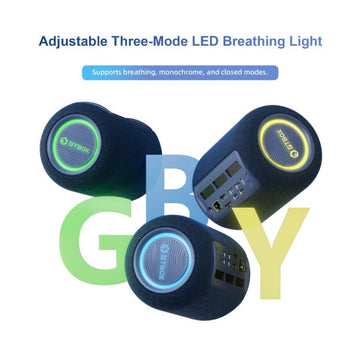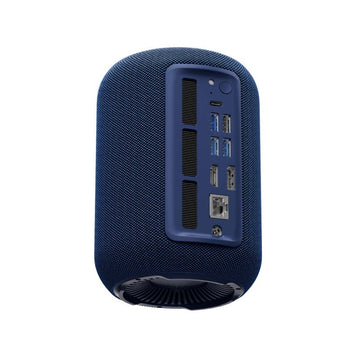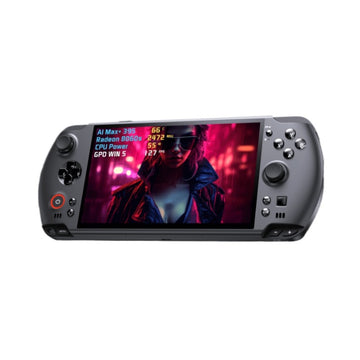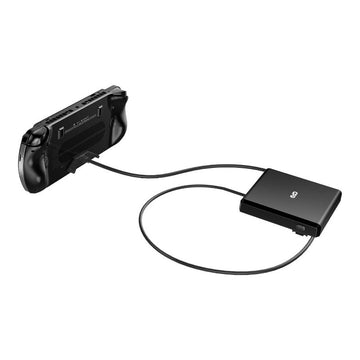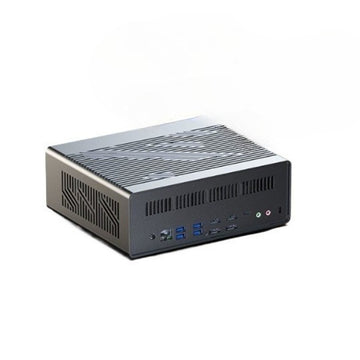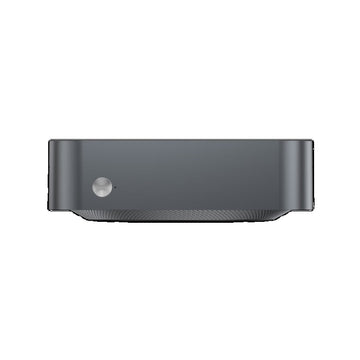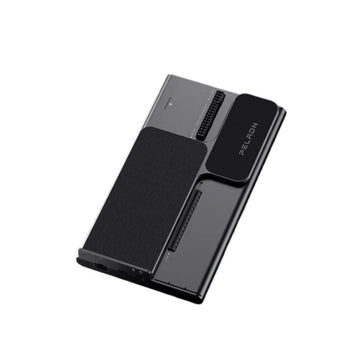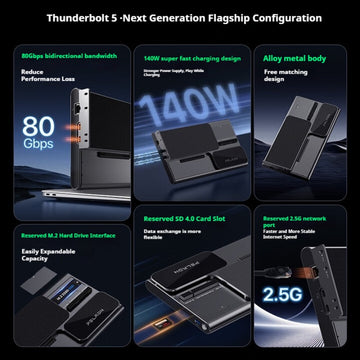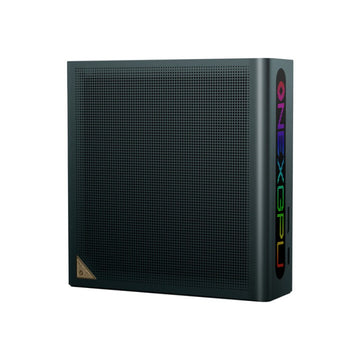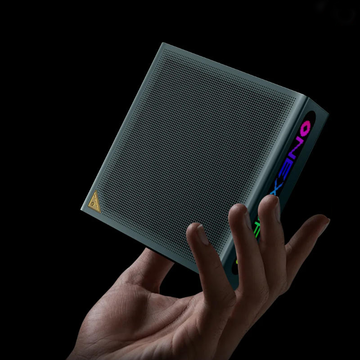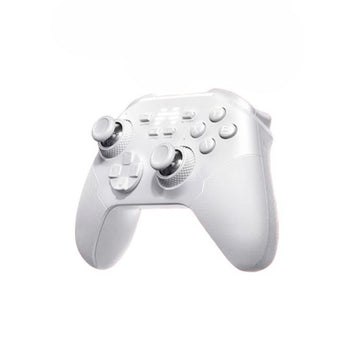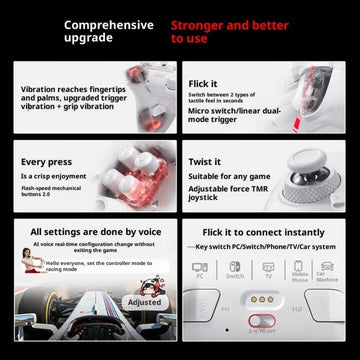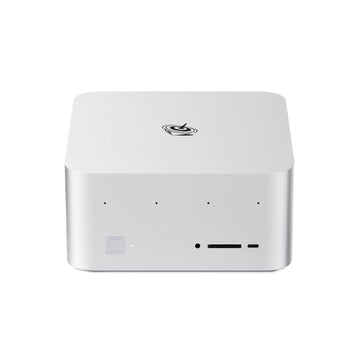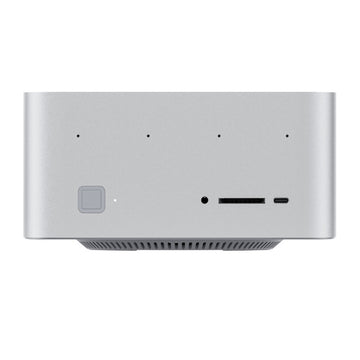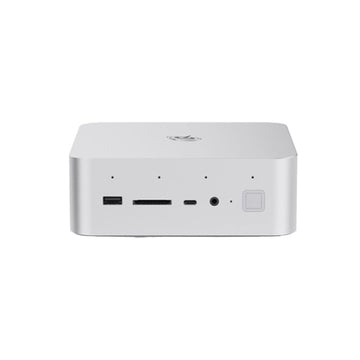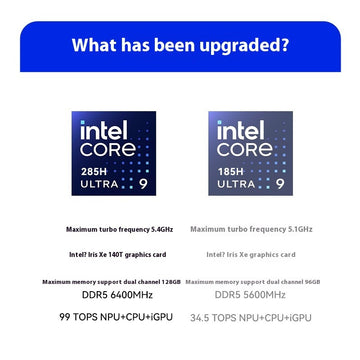AYN Loki Max Win Handheld Unboxing and Testing
Friends familiar with the world of Android handhelds may already be acquainted with Odin handhelds, which were prevalent during the era of RK3326 processors. However, AYN, a notable player in this domain, took a different route by equipping their handhelds with Qualcomm Snapdragon 845 and MediaTek Dimensity 900. With impeccable craftsmanship and design, AYN offered a unique and unparalleled experience, setting itself apart from the sea of imitations. In mid-2022, AYN ventured into the Win handheld market, unveiling their ambitious Loki series handheld development plan and initiating pre-orders through crowdfunding. Nevertheless, being their first foray into designing a Win machine, AYN faced numerous challenges and setbacks. Multiple revisions and delays led to the first shipment of the Loki Max being pushed back to June of this year.
 Now, let's delve into a more objective evaluation of the AYN Loki Max. It is worth noting that the frequent delays, considering the rapidly evolving CPU landscape in the Win handheld market where annual updates are the norm, have significantly undermined the device's competitiveness and unique selling points. However, despite these setbacks, we must acknowledge that the Loki Max offers a markedly improved user experience compared to its predecessor, the Odin. Additionally, its 6-inch form factor manages to deliver efficient heat dissipation, enhancing overall performance and ensuring a comfortable handheld experience.
Now, let's delve into a more objective evaluation of the AYN Loki Max. It is worth noting that the frequent delays, considering the rapidly evolving CPU landscape in the Win handheld market where annual updates are the norm, have significantly undermined the device's competitiveness and unique selling points. However, despite these setbacks, we must acknowledge that the Loki Max offers a markedly improved user experience compared to its predecessor, the Odin. Additionally, its 6-inch form factor manages to deliver efficient heat dissipation, enhancing overall performance and ensuring a comfortable handheld experience.
Unpacking and Design
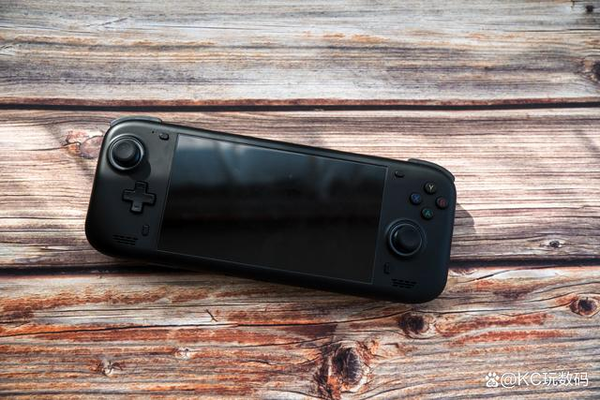
The AYN Loki Max handheld comes in two color schemes, black and white. Currently, I have the black variant with a storage capacity of 16GB+512GB, and it is adorned with a protective tempered film. The button layout of the device follows the standard XBOX layout, offering familiarity and ease of use. On the front, it features a fully laminated IPS screen, which ensures enhanced visual quality and reduced glare. The screen resolution stands at 1920x1080, delivering crisp and vibrant imagery for an immersive gaming experience.
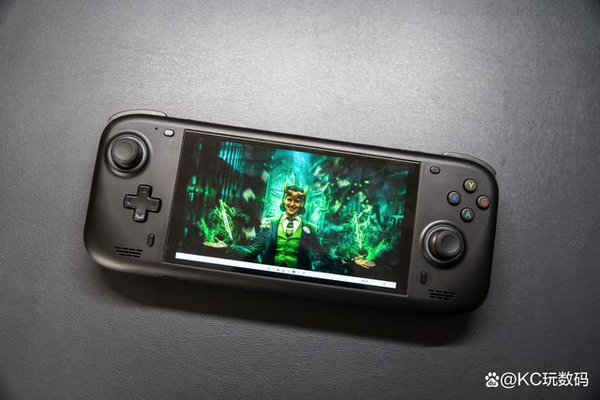
The AYN Loki Max handheld's physical dimensions are measured at 248 x 96 x 22mm, with the thinnest part of the body measuring 22mm in thickness. The maximum thickness is 49mm, measured from the highest position of the joystick to the grip. In terms of weight, the body alone weighs just over 570 grams, while attaching the complimentary tempered film adds an additional 10 grams, bringing the total weight to 580 grams. When compared to other similar devices, such as the SD (Steam Deck) weighing 669 grams, AYA Neo 2 at 680 grams, OneXplayer Mini Pro at 599 grams, and GPD Win4 at 598 grams, this device stands out for being both thinner and lighter. It only falls behind the exceptionally lightweight AYA Neo Air Plus, which weighs 525 grams.
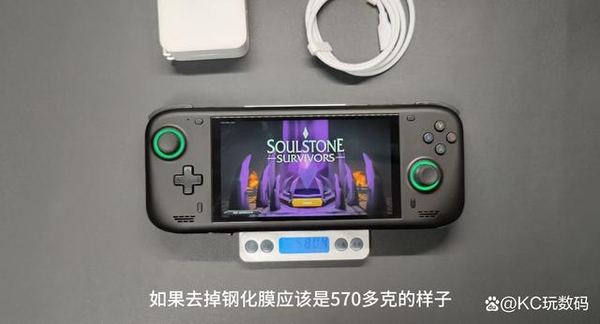
The weight of the AYN Loki Max handheld, including the tempered film attachment, measures 580 grams.
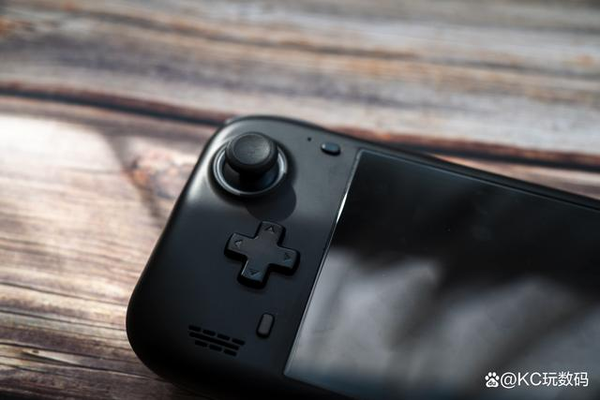
When it comes to the Loki Max, two of my favorite upgrade points are the joystick and buttons. In comparison to the Odin model, the Loki Max features a larger joystick cap, providing a heightened level of comfort and improved controllability. The operation of the cross key is exceptionally flexible, allowing for smooth movements, and the pressing feel is delightfully crisp. These enhancements truly elevate the overall gaming experience on the Loki Max, making it a fantastic choice for avid gamers seeking precision and comfort in their gameplay.
ABXY adopts a four-color design, enhancing its visual appeal. Compared to Odin, ABXY offers a shorter key travel distance and lighter force feedback when pressed. This results in a button feel that closely resembles the comfortable sensation provided by the PlayStation 5 controller, which personally suits my preferences better.

On the front of ABXY, there are four function buttons. In XBox handle mode, the upper right button serves as the Start button, while the upper left button functions as the Back button. The lower left button corresponds to the Home button, providing quick access to the system's main interface. Additionally, the lower right button acts as a shortcut key for the Locky Control Center (LCC). By pressing LCC, the LCC interface can be summoned from any screen or application. Furthermore, LCC includes several pre-programmed shortcut functions, adding to its convenience and usability.
- Press and hold Start for 2 seconds = activate on-screen keyboard
- Long press Back for 2 seconds = return to desktop
- BACK + START = Task Manager
- Long press L1 + R1 for 3 seconds = switch gamepad/keyboard and mouse mode

The back of the device features two buttons, namely M1 and M2. In its current version, the device is in the XBOX handle mode, where M1 corresponds to L3 and M2 corresponds to R3 by default. However, with the upgraded control center, users can now access the custom shortcut key function. Additionally, located on the right side of the back of the device, there is a square opening serving as the fan air inlet.

The L1/2 and R1/2 controllers feature a spacious, full-size design that closely resembles a traditional handle, providing users with a familiar and comfortable grip. Positioned on the top of the controllers, you'll find convenient power buttons that allow for quick and easy activation. To ensure effortless navigation and control, the controllers also come equipped with intuitive volume up and down buttons. Additionally, the presence of power indicator lights offers clear visual feedback, keeping you informed about the device's status at all times. With these user-friendly features, the L1/2 and R1/2 controllers deliver a seamless and enjoyable gaming experience.

The default controller for the system is the XBox controller, which offers satisfactory performance with its well-functioning buttons and joystick. However, one aspect that could be improved is the linear trigger component, which has a longer key travel distance. To address this issue and cater to users' individual preferences, it would be beneficial to provide software that allows customization options. By offering this software, users can adjust the trigger sensitivity to better align with their gaming habits and enhance their overall gaming experience.

On the right side of the top, there is an opening that serves as the heat dissipation air outlet. Through the window, one can observe the presence of a pure copper radiator with a notably spacious surface area. Subsequent tests have confirmed the effectiveness of this heat dissipation setup.

Located at the bottom of the fuselage, the TF card slot, 3.5mm headphone jack, USB4 interface, and microphone are conveniently positioned. However, it is worth noting that the TF card slot cover in the initial version of the device might be tight and require some effort to open. Despite this minor inconvenience, it does not significantly impact regular usage and functionality.
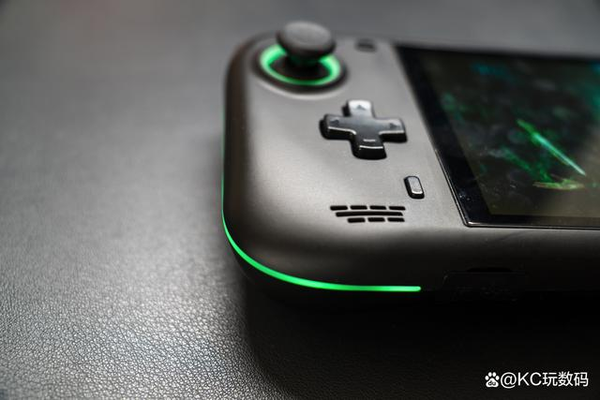
 The AYN Loki Max is a versatile device that comes with a rocker and handle RGB lights. This unique feature allows users to customize the color and brightness of the lights to suit their preferences. With the AYN Loki Max's LCC (Lighting Control Center), individuals can easily select the desired colors and adjust the brightness levels according to their specific needs. Whether it's creating a vibrant and colorful ambiance or a more subdued and relaxed atmosphere, the AYN Loki Max offers users the flexibility to personalize their lighting experience.
The AYN Loki Max is a versatile device that comes with a rocker and handle RGB lights. This unique feature allows users to customize the color and brightness of the lights to suit their preferences. With the AYN Loki Max's LCC (Lighting Control Center), individuals can easily select the desired colors and adjust the brightness levels according to their specific needs. Whether it's creating a vibrant and colorful ambiance or a more subdued and relaxed atmosphere, the AYN Loki Max offers users the flexibility to personalize their lighting experience.
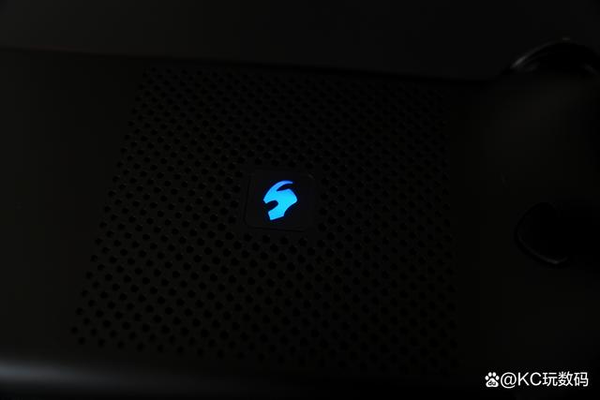
It is worth mentioning that the Loki LOGO at the center of the fan air inlet is also a light bar, which can also be adjusted with the system RGB lights.
Simple Disassembly
Disassembling the AYN Loki Max handheld carries a potential risk of causing damage to the device. Therefore, it is crucial to exercise caution and evaluate your competence in handling such tasks before proceeding. It is highly recommended to consult the official disassembly guide provided by AYN to ensure that you follow the correct procedures. This guide will provide you with the necessary instructions and precautions to minimize the chances of any mishaps occurring during the disassembly process. By adhering to these guidelines, you can mitigate the risk of damaging the AYN Loki Max and ensure a safe disassembly experience.

To begin the disassembly process, start by unscrewing the four screws located on the back of the fuselage. Once the screws are removed, utilize a warp tool or a similar implement to gently pry open the back cover along the larger gap. With careful maneuvering, the back cover should come off, allowing access to the internal components.

Upon removing the back cover, it becomes evident that approximately half of the back area of the machine is dedicated to housing the fan.

The M1/M2 function PCB board is a specialized circuit board designed to facilitate the M1 and M2 functions of a device or system. The M1 function refers to a specific feature or capability, while the M2 function represents another distinct functionality. These PCB boards are carefully engineered to accommodate the necessary components, connectors, and traces required to enable both functions seamlessly. With the M1/M2 function PCB board, manufacturers and developers can efficiently integrate diverse functionalities into their products, enhancing their overall performance and versatility. Whether it's in consumer electronics, industrial equipment, or other technological applications, the M1/M2 function PCB board plays a crucial role in enabling advanced features and enabling a wide range of applications.

One of the battery suppliers involved in the project is Yunfan Electronics. Their battery comes with a rated voltage of 11.55V and a rated capacity of 4000mAh. By multiplying these values, we can calculate the energy capacity of the battery, which amounts to 46.2Wh (watt-hours).

During our examination of the handheld device, we discovered the presence of a side LED light strip. This additional feature enhances the device's functionality by providing supplementary illumination along its edges.

The radiator copper sheet material is known for its relatively sufficient quality. With excellent thermal conductivity and durability, copper sheets are a popular choice for radiator production. The high heat transfer capabilities of copper allow for efficient dissipation of heat, ensuring optimal cooling performance.

holds it in place. Ensure that you note the exact orientation and location of the cable so that you can reattach it correctly later. Gently release the bracket buckle by pressing or sliding it, depending on the type of bracket used. Once the buckle is released, carefully lift the fan away from the motherboard, taking care not to damage any nearby components. Remember to handle the fan with caution, as it contains delicate internal parts.

To remove the fan from the bracket, start by detaching the buckle of the fan bracket along with the two fixing screws. Once these are removed, carefully peel off the fixed copper foil and the cooling copper sheet that are attached to the fan. With these components separated, the fan can be easily taken out. The fan is designed to operate at a voltage of 5V with a current rating of 0.5A (maximum power consumption of 2.5W). It bears the model number B85D7H02359 and is manufactured by Dingrui Technology.

After removing the fan, you can see the SSD card slot. The size of the SSD is M.2 2242, and there is a cooling sticker attached at the factory. Since the heat dissipation sticker completely covers the SSD body, it is not necessary to tear off the heat dissipation sticker to check the SSD model here.

Remove the two cables, and after removing the SSD, you can see that the CPU adopts a dual heat pipe heat dissipation design, and the Y-shaped heat pipe design is also more reasonable. Compared with some peculiar U-shaped double heat pipes for heat dissipation, or a single heat pipe should be more efficient, which may be the reason why Loki can provide a maximum TDP of 38W.

The memory particles utilized in this particular context are sourced from SK Hynix, a prominent semiconductor manufacturer. Specifically, the memory type employed is LPDDR5-6400, which refers to the fifth generation of Low-Power Double Data Rate (LPDDR) memory technology with a maximum data transfer rate of 6400 megatransfers per second. SK Hynix, known for its expertise in memory solutions, ensures high-performance and efficient memory particles for a wide range of applications.

The charging control chip used in this device is sourced from Texas Instruments (TI), specifically the BQ24780S model. Texas Instruments is a renowned semiconductor company known for its high-quality electronic components. The BQ24780S chip is specifically designed for charging applications and provides efficient and reliable power management. With its advanced features and robust performance, the BQ24780S chip from Texas Instruments ensures optimal charging control for this device, delivering a seamless user experience.

The Realtek RTS5452H is a highly versatile and advanced control chip designed for use near the USB-C interface. This multi-function chip offers support for USB Power Delivery (PD) and CC (Configuration Channel) capabilities, making it a powerful solution for managing various USB-C functionalities. With the RTS5452H, users can benefit from efficient and reliable control over power delivery and communication protocols within USB-C devices. Its robust design and feature-rich nature enable seamless integration and effective management of charging, data transfer, and other USB-C operations. Realtek has developed the RTS5452H as a cutting-edge solution to meet the evolving demands of modern USB-C technologies, making it an excellent choice for manufacturers and users seeking enhanced performance and flexibility.
Performance and Playtesting

The handheld device is primarily designed for gaming purposes, with its main and sole function centered around providing an optimal gaming experience. When assessing its performance, the initial and fundamental test involves evaluating its theoretical gaming capabilities. With the Boost mode activated and power consumption reaching 38W+, the device undergoes a 3DMark TS benchmark test, resulting in an overall score of 2883. This score is further broken down into a graphics score of 2590 and a CPU score of 8032. These figures provide a quantitative measure of the device's gaming performance, reflecting its ability to handle graphics-intensive tasks and process complex computational tasks efficiently.

However, the power consumption of most handhelds is generally controlled within 30W. Setting the full blood TDP running score will collapse the battery life on the one hand, and the sound of the fan taking off is mostly unacceptable. 25W+ with Boost mode turned on, 3DMark TS has a running score of 1582, including 1395 for graphics and 6588 for CPU. However, it should be noted that this part is only for testing the theoretical performance of R7-6800U, without adjusting the CPU and GPU frequency to optimize the score.

Due to the large amount of test data, icons are used here to present the 3DMark TS running scores of different TDPs under the current 10~38W TDP supported by LCC. It can be seen that 35W is basically the performance sweet spot of R7-6800U, and this TDP can basically play the full performance of the CPU.
However, considering the balance of picture, frame rate, power consumption, and noise, different games need to adjust TDP, CPU frequency, GPU frequency, and even add frame lock to obtain the most balanced experience. (I have published the tutorial on how to use LCC to adjust TDP, CPU, and GPU on Xiaopozhan, keywords: AYN Loki Max Handheld Control Center Getting Started Guide In-game TDP adjustment and setting optimization)

In terms of CPU performance, the CineBench R23 benchmark yielded impressive results. The single-core score reached an impressive 1482, indicating the CPU's ability to handle tasks that heavily rely on single-threaded performance. Furthermore, the multi-core score reached an impressive 12065, showcasing the CPU's prowess in handling tasks that can be parallelized across multiple cores. These scores demonstrate the CPU's capability to handle a wide range of demanding applications and highlight its overall efficiency and power.

In the gaming section of our performance evaluation, we conducted tests using the Shadow of the Tomb Raider Benchmark. The system configuration we employed included a power setting of 38W with boost, utilizing 100% of the CPU, and the GPU running at 2200MHz. The resolution was set at 1080P, with the quality settings adjusted to the minimum level. Throughout our testing, we observed an average frame rate of 51 frames per second.

However, I would recommend choosing 720P + lock 40 frames for actual gaming. The measured 11W TDP + turn off Boost + 70% CPU + 900 ~ 1000Mhz GPU can basically stabilize 40FPS. At this time, the total power consumption is only 18.35W, the battery life of 46.2Wh is about two and a half hours, and the fan noise can also be controlled to a very small level.

Forza Horizon 5 is an incredibly immersive racing game that pushes the limits of gaming hardware. With its 38W+Boost CPU and 100% CPU utilization, combined with a powerful 2200Mhz GPU, the game delivers stunning visuals and a captivating gameplay experience. Even on lower quality settings at 1080P resolution, the game maintains an impressive frame rate of 79.1 frames per second. This combination of optimized performance and graphics ensures that players can enjoy the adrenaline-pumping races and breathtaking landscapes of Forza Horizon 5 without compromising on smoothness or visual fidelity.

However, I recommend choosing 1080P with extremely low image quality for actual gaming. The measured 12W TDP+100%CPU+800Mhz GPU can basically keep above 50FPS (53.0).

For online games, Genshin Impact 25W+CPU100%+GPU2200Mhz, 1080P field running map can be stabilized at 60 frames. If you lock 30 frames in the game, you should be able to properly reduce TDP, CPU, and GPU to save more power consumption.

The 2D game portion specifically selects Dead Cell as its game of choice. Remarkably, even under demanding conditions such as operating at a full 60 frames per second, while adhering to an 8-watt thermal design power (TDP) and disabling Boost, while also utilizing 40% of the CPU and increasing the GPU clock speed by 200MHz, the actual power consumed amounts to only 5.72 watts. If the Low Core Count (LCC) could offer a 5-watt TDP alternative, there would likely be additional room for optimizing power efficiency.
Considering the measured TDP of 5.72 watts, the total power consumption reaches 9.97 watts. With a battery capacity of 46.2 watt-hours, one would expect the battery life to extend slightly beyond 4.5 hours.
Our Verdict
As a Win handheld, AYN Loki Max actually has good hardware quality, and the body size and heat dissipation are at a relatively balanced point. The weight of more than 570 grams is quite good in terms of the same size and performance release. The experience of playing 2D on the 6-inch screen and running 3A with low power consumption is not bad. The heat dissipation part is relatively powerful, and the fan is also very quiet after properly controlling the TDP. The 46.2Wh battery is considered normal for this size. In fact, there is still a lot of room for improvement in terms of battery life for Win handhelds.
The software part LCC (Locky Control Center) is also very convenient to use, but currently lacks the functions of locking frames, dynamically adaptive CPU, GPU frequency, and adjusting TDP, CPU, and GPU according to game records. There are still many functions in the control center Details are worth improving. If you can quickly make up for the shortcomings in the later stage, or ask the author such as the somatosensory assistant to help adapt, it should be more friendly to the players.
However, as a product, timing is very important in many cases. As the R7-6800U handheld (AYN Loki Max), or all Win handhelds, they all face a strong opponent ROG Ally. How to find differentiation in terms of configuration, parameters, and user needs to avoid the blow of dimensional reduction from big manufacturers may be what these handheld manufacturers need to think about.

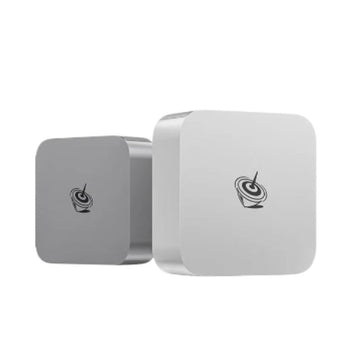
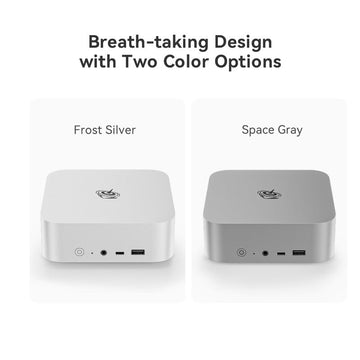
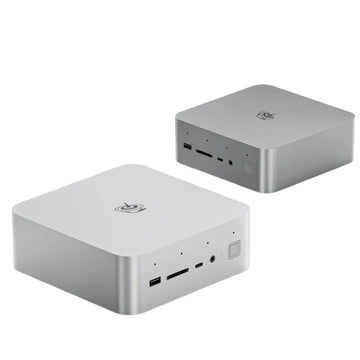
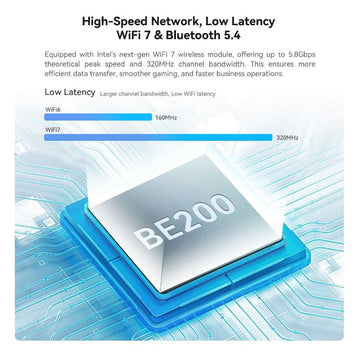
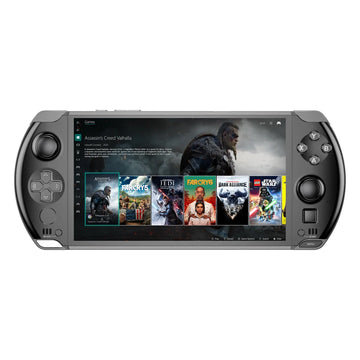
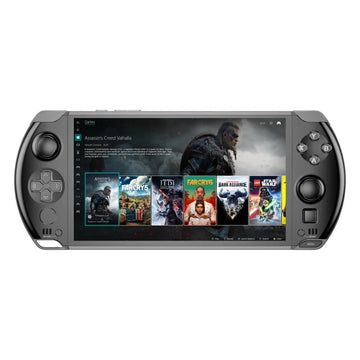
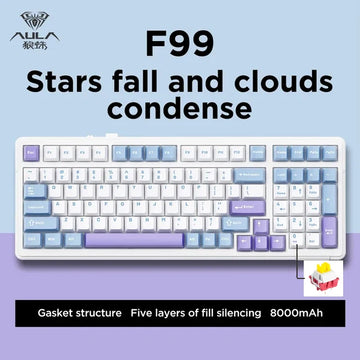
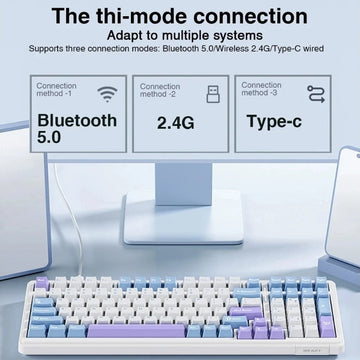





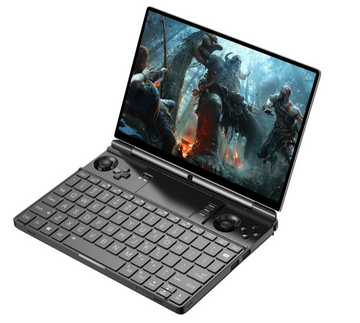

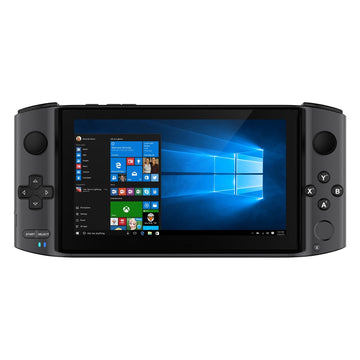
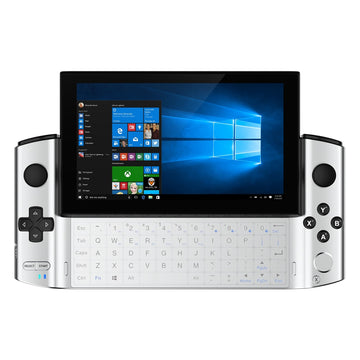
![[US Warehouse]Flydigi Vader 5 Pro Dragon Ball Limited Edition Game Controller](http://minixpc.com/cdn/shop/files/2bf62a4b1011cdf0b5088de9d5ad663d_360x.jpg?v=1763001514)
![[US Warehouse]Flydigi Vader 5 Pro Dragon Ball Limited Edition Game Controller](http://minixpc.com/cdn/shop/files/0944bf12c40c5bcaf5bc45c2a2f0b9e0_360x.jpg?v=1763001514)


